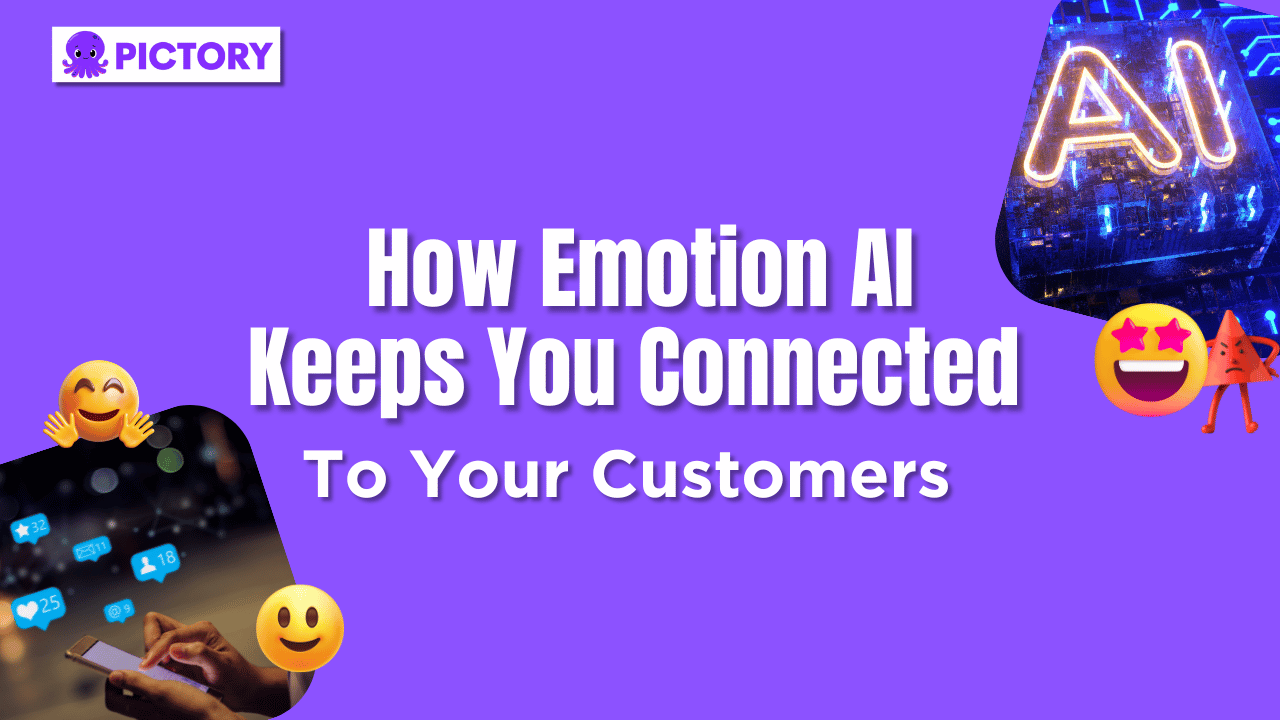Imagine a world where businesses can understand their customers’ emotions, preferences, and needs in real-time, creating truly personalized experiences.
This is no longer a distant dream, as Emotion AI technology, or affective computing, offers the potential to revolutionize customer service and enhance our interactions with technology.
In this blog post, we will explore the world of emotion AI, understanding and responding to customer sentiment, and enhancing customer service interactions.
We’ll also look at leveraging emotion AI for valuable business insights and addressing ethical concerns.
Short Summary
Emotion AI combines AI techniques with psychology and multiple data sources to decode customer sentiment, enabling businesses to analyze customer emotions in real time.
Facial expression analysis and body language interpretation are key aspects of emotion AI which help create personalized support experiences for customers.
Leveraging Emotion AI provides valuable business insights through analyzing feedback, product/service development, and brand reputation monitoring & ethical considerations that must be addressed when implementing it.
Sign up, or upgrade your current Pictory account, to see how we’re using AI to revolutionize the video creation process.
Decoding Customer Sentiment with Emotion AI

Emotion AI systems, also known as affective computing, are a rapidly evolving area in artificial intelligence.
It combines AI techniques with psychology, and multiple data sources, for understanding and reacting to emotions expressed by humans.
By recognizing facial expressions, body language, and natural language, emotion AI provides valuable insights into customer emotions and preferences, enhancing customer interactions and experiences.
The potential applications of emotion AI span across diverse industries, from healthcare and gaming to customer service.
Emotion AI enables businesses to analyze customer emotions in real time and respond accordingly.
This leads to more engaging interactions and improved customer satisfaction.
In the following sections, we will dive into the main components of emotion AI, including facial expression analysis, body language interpretation, and natural language processing.
Facial Expression Analysis
Facial expression analysis is a critical component of emotion AI, allowing machines to detect and recognize emotions through visual cues.
By analyzing vast amounts of data, machines can identify patterns in facial expressions and provide valuable insights into an individual’s emotional state.
This technology has the potential to make human-machine interactions more organic and tailored.
It enables machines to respond to human emotions appropriately.
For instance, customer service representatives can better understand customers’ emotions and respond accordingly
This leads to enhanced customer experiences and increased satisfaction.
Body Language Interpretation

Body language interpretation is another key aspect of Emotion AI.
It involves the analysis of non-verbal cues, such as gestures, facial expressions, and body movements, to gain insights into a person’s emotions, intentions, and thoughts.
These systems can decipher these non-verbal cues in real time, allowing businesses to better understand their customers and provide more personalized support.
This deeper understanding of customers’ emotions can enhance customer service interactions and offer invaluable business insights.
Ultimately this will lead to improved customer satisfaction and loyalty.
SEE MORE: Sentient Circuits: Exploring the Emotional Capabilities of AI
Natural Language Processing
Natural language processing (NLP) is a crucial component of AI programming.
It focuses on analyzing text and speech to identify sentiment and emotional context.
By employing NLP techniques, the AI can analyze customer reviews, social media posts, and chat transcripts to ascertain the sentiment behind customer messages.
Emotion AI can be used in website, app design, and product interfaces.
This technology allows businesses to create user interfaces that respond to users’ feelings quickly and flexibly.
By modifying components such as layout, color schemes, and content according to users’ emotional states, businesses can provide more personal and captivating user experiences.
This results in improved customer satisfaction and loyalty.
Enhancing Customer Service Interactions with Emotion AI

By tapping into the power of emotion AI, businesses can significantly enhance customer service interactions.
This technology allows customer service agents to provide personalized support, gain real-time emotional insights, and improve their skills through training and development.
In the following sections, we will explore how emotion AI can be leveraged to enhance customer service interactions, from providing personalized support and real-time emotional insights to facilitating employee training and development.
Personalized Support
Personalized support is a customer service approach that takes into account the individual needs of each customer.
It involves providing tailored solutions to customer inquiries and issues, as well as cultivating relationships with customers.
Emotional AI systems facilitate the delivery of personalized support by detecting emotional cues, such as frustration or anger, in a customer’s messages.
They escalate the conversation to a human agent or provide additional support to de-escalate the situation.
Personalized support can lead to increased customer loyalty, heightened customer satisfaction, and enhanced customer retention.
Real-Time Emotional Insights
Real-time emotional insights refer to the ability to gain insight into how customers are feeling in the present.
Emotion AI can analyze facial expressions, body language, and natural language to detect emotional responses, allowing businesses to adjust their approach accordingly.
By providing real-time emotional insights, Emotion AI enables companies to create more dynamic and responsive customer support experiences, addressing users’ emotions in the present and enhancing overall satisfaction.
These insights can also help businesses identify customer pain points and devise more efficient customer service strategies.
Training and Development
Emotion AI, a form of emotional intelligence, can greatly assist in employee training and development.
By providing insights into customer emotions, employees can better understand and respond to customer needs, leading to more personalized and efficient customer service.
Furthermore, Emotion AI can be utilized to provide feedback to employees regarding their customer service interactions, allowing them to enhance their skills and deliver superior customer service.
This, in turn, can lead to improved customer satisfaction and loyalty, as well as increased sales and revenue.
Leveraging Emotion AI for Valuable Business Insights

Emotional AI is not only beneficial for enhancing customer interactions, but it can also provide valuable business insights.
By analyzing customer emotions at various touchpoints, businesses can recognize areas of difficulty, areas that require improvement, and moments of joy.
In the following sections, we will explore how emotion AI can be leveraged for valuable business insights through customer feedback analysis, product and service development, and brand reputation monitoring.
Analyzing Customer Feedback
Customer feedback analysis is essential for businesses to understand customer satisfaction and identify areas that require improvement.
Emotion AI can be employed to perform sentiment analysis on customer feedback, providing valuable insights into customer sentiment and preferences.
By utilizing Emotion AI to analyze customer feedback, businesses can gain a more comprehensive understanding of customer needs and preferences.
This leads to better customer service interactions and the development of more customized services and products.
Product and Service Development

Emotion AI can contribute to product and service development by identifying customer emotions and reactions.
By understanding which emotions are most closely associated with customer satisfaction, businesses can focus on creating products and services that are more likely to be embraced by their target audience.
This deeper understanding of customer emotions can lead to improved customer satisfaction, increased sales, and greater customer loyalty.
Furthermore, Emotion AI can help businesses identify trends and patterns, allowing them to make more informed decisions about product and service development.
Monitoring Brand Reputation
Monitoring brand reputation is essential for maintaining a positive image in the eyes of customers, employees, and other stakeholders.
Emotion AI can be used to analyze customer interactions, providing businesses with valuable insights into customer sentiment and preferences.
By proactively addressing issues and concerns, businesses can maintain a positive brand reputation, heighten customer loyalty, and enhance customer service.
Emotion AI can help businesses identify potential issues before they become significant problems, allowing them to take corrective action and maintain a favorable brand image.
Ethical Considerations and Challenges in Emotion AI

As with any emerging technology, Emotion AI comes with its own set of ethical considerations and challenges.
These include privacy concerns, cultural biases, and the responsible implementation of the technology.
In the following sections, we will delve into these ethical considerations and challenges, discussing the importance of addressing privacy concerns, the impact of cultural biases, and the need for responsible implementation in the use of Emotion AI.
Privacy Concerns
Privacy concerns arise due to the collection and analysis of personal data in Emotion AI.
The technology can potentially lead to intrusive monitoring of human emotions, and accumulation and storage of sensitive personal data.
It also carries the risk of inaccurate analysis of data resulting in privacy breaches.
To address these concerns, businesses must ensure that they are using Emotion AI responsibly and ethically.
This includes safeguarding customer privacy and taking the necessary precautions to prevent any potential biases or breaches.
Cultural Biases
Cultural biases in Emotion AI can lead to misinterpretations and misunderstandings.
Emotion AI may be subject to cultural biases due to its reliance on data, which may contain inherent biases.
To ensure the responsible and equitable use of emotion AI, businesses must be aware of these biases and work towards rectifying them.
This can involve refining algorithms, incorporating diverse data sets, and continuously monitoring the performance of the technology to ensure its accuracy and fairness.
Responsible Implementation
Responsible implementation of emotion AI requires addressing ethical concerns and ensuring the technology is used for the benefit of all.
Businesses must consider factors such as privacy, data security, and potential cultural biases when implementing emotion AI.
By addressing these concerns and utilizing emotion AI responsibly, businesses can create more personalized customer experiences, improve customer service, and gain valuable insights into customer behavior, ultimately leading to increased customer satisfaction and loyalty.
The Future of Emotion AI in Customer Experience
The future of Emotion AI in customer experience is bright, as innovative technologies and expanding applications pave the way for new opportunities.
By harnessing the power of Emotion AI, businesses can gain a competitive edge, enhance customer interactions, and create more engaging customer experiences.
In the following sections, we will explore the future of emotion AI, including innovative technologies, expanding applications, and the importance of addressing ethical challenges.
Innovative Technologies

Innovative technologies, such as facial emotion recognition, emotion recognition from body language and voice patterns, and AI-driven emotional expression analysis, will continue to advance Emotion AI capabilities and applications.
These advancements will enable Emotion AI to provide more precise insights into customer sentiment.
It will revolutionize customer experience across various industries, from marketing and education to digital health.
Expanding Applications
As Emotion AI continues to evolve, its applications will expand, leading to new ways of enhancing customer experiences and interactions.
From coaching customer experience agents and augmenting brand exposure to assisting caregivers in monitoring patients and optimizing digital health, Emotion AI will play an increasingly important role in shaping the future of technology and customer experience.
By understanding and addressing the ethical challenges associated with Emotion AI, businesses can harness its full potential, revolutionizing customer experience and driving long-term success.
Summary
Emotion AI is transforming the customer experience by decoding customer sentiment, enhancing customer service interactions, and providing valuable business insights.
As this technology continues to evolve, its innovative technologies and expanding applications will reshape the way businesses interact with their customers.
By addressing ethical considerations and challenges, businesses can harness the power of Emotion AI responsibly and ethically, ultimately leading to improved customer satisfaction, loyalty, and long-term success.
Frequently Asked Questions
What is AI that understands emotions?
Emotion AI, also known as affective computing, is a branch of Artificial Intelligence that aims to process, understand, and replicate human emotions.
It uses technologies such as natural language processing and sentiment analysis to detect and interpret human emotional signals in text, audio, video, or combinations thereof.
This technology has enabled machines to develop empathy and smart products that can respond to human emotions effectively.
Does AI understand human emotion?
AI can be trained to recognize and respond to human emotions by analyzing facial expressions, vocal tones, body language, and other subtle cues.
There are already several emotion AI programs that detect and interpret these signals in text, audio, video, or combinations thereof, with potential applications in healthcare diagnostics and monitoring of resilience in physical health conditions.
These programs can be used to detect changes in mood, detect signs of depression, and even provide personalized advice and support.
AI can also be used to detect and respond to changes in physical health, such as changes in heart rate.
How to detect emotions using AI?
AI emotion recognition utilizes machine learning, deep learning, computer vision, and other technologies to detect emotions by analyzing objects and motions.
Machines can be trained to identify facial expressions as objects.
How can emotion AI improve customer service interactions?
Emotion AI can help personalize customer service interactions, provide real-time emotional insights, and assist in employee training and development; thus greatly improving customer service interactions.
What are the ethical considerations and challenges in emotion AI?
Emotional AI poses ethical considerations and challenges such as privacy, cultural biases, and the need for responsible implementation.
These considerations and challenges require careful thought and consideration to ensure that the technology is used responsibly and ethically.
For example, privacy must be respected and cultural biases must be avoided. Additionally, the implementation of the solution is ongoing.
Whilst Pictory’s AI can’t read your feelings, it doesn’t need to.
We know you’ll be thrilled by how quick and easy to use our video creation software is.
Sign up for a FREE trial today, or upgrade your current account to explore the ways we can enhance your video marketing strategy.








